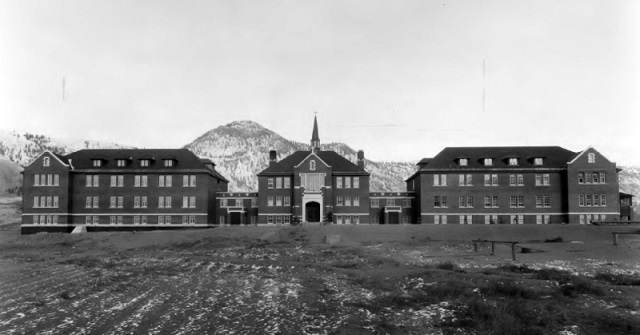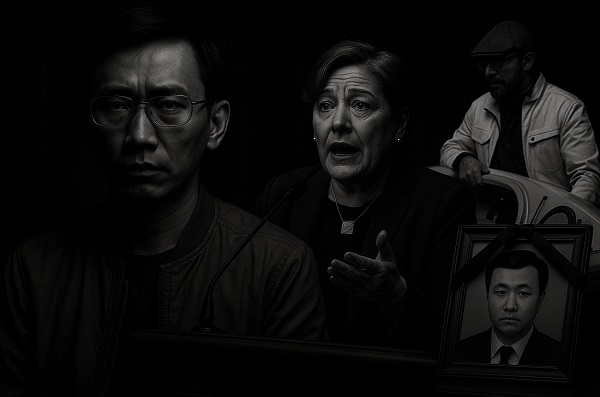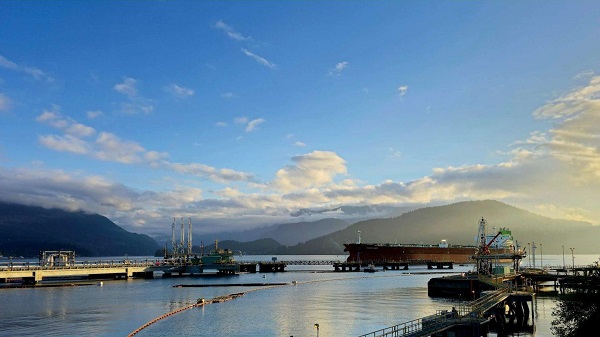Frontier Centre for Public Policy
Money Under False Pretences?

From LifeSiteNews
When is a hoax, not a hoax? They knew the study revealed ‘anomalies,’ not bodies.
A recent article appeared in the Western Standard admonishing conservatives for using the term “hoax” when referring to the Kamloops claim — namely the MAY 27, 2021 claim — that the remains of 215 former students had been discovered on the grounds of the local residential school.
The author of the article noted that many former residential school students might be offended by the use of the term. I agree with him that innocent people should not be unnecessarily hurt by writers trying to make a point. Everyone agrees that many people were hurt by their residential school experiences. That is no hoax.
However, what the author might not be aware of is the fact that what was claimed at Kamloops was patently false. It was a clear example of misinformation. That May 27, 2021 announcement claimed that the “remains of 215 former students” had been found.
This was false. No such “remains”, “bodies”, “graves”, or “mass graves” had been found.
And none have been found since that claim was first made. Only soil “anomalies”, were detected. “Anomalies” are basically radar signals that could be from rocks, tree roots, or other old excavations that have nothing to do with graves.
Thus, the people who made the claim that the “remains of 215 children had been found” were making a claim they knew was false. Although they have refused to release the ground penetrating radar report made by Sarah Beaulieu, we know with absolute certainty that Beaulieu reported finding only anomalies and not “remains”because Beaulieu said so.
She also said that only excavation would show what those anomalies were. And the people making the claim have refused to do any excavation.
“Anomalies” and “human remains” are two entirely different things. There is no excuse for Kamloops Chief Roseanne Casimir and her colleagues announcing that human remains had been found, when only anomalies, that could be from many different sources, had been detected.
On the basis of this false claim the claimants obtained $8 million from the federal government. That money may or may not have been spent — we don’t know because they won’t tell us.
That false Kamloops claim, and the $320,000,000 the Trudeau government was foolish enough to promise, then inspired copycat claims from other poor indigenous communities. Instead of focusing on their many very real problems, those communities are now engaged in a pointless exercise searching through old cemeteries for evidence of imagined secret burials. That original Kamloops claim has done a lot of harm.
So, the use of the term “hoax” might be offensive to some, but what should we call an application for $8 million from the federal government based on information that the applicants knew to be false? Perhaps there is a more polite term to describe deliberately obtaining money by false pretences.
Maybe “a patently false claim?”
Either term is probably accurate. Just to be clear — the people making this claim knew they had not discovered “remains.”
Despite that, they repeated their misinformation far and wide. And it took three years for those same leaders to formally admit that only “anomalies” — and no remains — were found.
While it is entirely possible that many, or even most, of the people in that Kamloops community believed, and still mistakenly believe, that the remains of 215 children had been found, the point is that the leaders who made that claim knew with absolute certainty when making the claim that only “anomalies” and no remains, bodies, or graves, were found. They used that false information to fool government officials into giving them $8 million in tax dollars.
Whether that is a “hoax” or a “patently false claim” I don’t know. But it is certainly one or the other.
Readers wanting to take a deep dive into the false Kamloops claim and its ramifications might want to read “Grave Error — How the Media Misled us” edited by Tom Flanagan and Chris Champion. Disclosure: I am a contributor to the book.)
So, if the point of the author is to stress the need to avoid unnecessarily offending innocent people who had a rough time at residential school, I completely agree with him.
However, if the suggestion is that the people who are responsible for making a false claim — a claim has cost this country billions of dollars, a humiliating downgrading of our international reputation, and internal division for decades to come, I do not.
The people responsible for creating this national and international mess should be held to account. We shouldn’t care a whit if they are offended by any particular term we use to describe their dishonest behaviour.
Those people responsible for keeping the “hoax”, or “patently false claim” alive are both indigenous and non-indigenous. They include not only the senior indigenous leadership, but senior non-indigenous leaders, like Justin Trudeau and Marc Miller. They include incompetent journalists . They also include a spineless RCMP leadership that has failed completely in its responsibility to investigate and report to the Canadian public.
As for those people the author refers to who are suffering from their residential school experiences, surely it can’t be helpful for their leaders to promote baseless stories about murderous priests secretly burying 215 indigenous children? Surely such wild stories — stories that have no credible evidence to support them — can only inflame their feelings of victimhood, fomenting church-burning rage among the less sophisticated. indigenous people? They deserve better than that from their leaders.
All Canadians deserve better from our elected leaders.
If the people responsible for obtaining $8 million from taxpayers on the basis of this false claim find themselves in a courtroom it will be up to the presiding judge to choose the appropriate terms to describe their behaviour. The court might use the term “hoax”, “a patently false claim” or perhaps a different term entirely. The important thing is that the opportunists who made these false claims be held accountable for their behaviour.
But those responsible for perpetuating the false Kamloops claim — whatever it is called — should not wait for a court date. They should immediately apologize to all Canadians, but particularly to their own community members whom they misled.
They should also apologize to the people they have falsely accused of horrible crimes — namely the many priests, nuns and teachers, indigenous and non-indigenous, who worked at residential schools, and did their best to provide educations to the indigenous children who needed them.
And a defence lawyer would also probably advise them to begin to work on a restitution plan that would repay the $8,000,000 of taxpayer dollars that they obtained under false pretences.
Brian Giesbrecht, retired judge, is a Senior Fellow at the Frontier Centre for Public Policy
Business
Is Carney Falling Into The Same Fiscal Traps As Trudeau?

From the Frontier Centre for Public Policy
By Jay Goldberg
Rosy projections, chronic deficits, and opaque budgeting. If nothing changes, Carney’s credibility could collapse under the same weight.
Carney promised a fresh start. His budget makes it look like we’re still stuck with the same old Trudeau playbook
It turns out the Trudeau government really did look at Canada’s economy through rose-coloured glasses. Is the Carney government falling into the same pattern?
New research from the Frontier Centre for Public Policy shows that federal budgets during the Trudeau years “consistently overestimated [Canada’s] fiscal health” when it came to forecasting the state of the nation’s economy and finances over the long term.
In his research, policy analyst Conrad Eder finds that, when looking specifically at projections of where the economy would be four years out, Trudeau-era budgets tended to have forecast errors of four per cent of nominal GDP, or an average of $94.4 billion.
Because budgets were so much more optimistic about long-term growth, they consistently projected that government revenue would grow at a much faster pace. The Trudeau government then made spending commitments, assuming the money would be there. And when the forecasts did not keep up, deficits simply grew.
As Eder writes, “these dramatic discrepancies illustrate how the Trudeau government’s longer-term projections consistently underestimated the persistence of fiscal challenges and overestimated its ability to improve the budgetary balance.”
Eder concludes that politics came into play and influenced how the Trudeau government framed its forecasts. Rather than focusing on the long-term health of Canada’s finances, the Trudeau government was focused on politics. But presenting overly optimistic forecasts has long-term consequences.
“When official projections consistently deviate from actual outcomes, they obscure the scope of deficits, inhibit effective fiscal planning, and mislead policymakers and the public,” Eder writes.
“This disconnect between projected and actual fiscal outcomes undermines the reliability of long-term planning tools and erodes public confidence in the government’s fiscal management.”
The public’s confidence in the Trudeau government’s fiscal management was so low, in fact, that by the end of 2024 the Liberals were polling in the high teens, behind the NDP.
The key to the Liberal Party’s electoral survival became twofold: the “elbows up” rhetoric in response to the Trump administration’s tariffs, and the choice of a new leader who seemed to have significant credibility and was disconnected from the fiscal blunders of the Trudeau years.
Mark Carney was recruited to run for the Liberal leadership as the antidote to Trudeau. His résumé as governor of the Bank of Canada during the Great Recession and his subsequent years leading the Bank of England seemed to offer Canadians the opposite of the fiscal inexperience of the Trudeau years.
These two factors together helped turn around the Liberals’ fortunes and secured the party a fourth straight mandate in April’s elections.
But now Carney has presented a budget of his own, and it too spills a lot of red ink.
This year’s deficit is projected to be a stunning $78.3 billion, and the federal deficit is expected to stay over $50 billion for at least the next four years.
The fiscal picture presented by Finance Minister François-Philippe Champagne was a bleak one.
What remains to be seen is whether the chronic politicking over long-term forecasts that plagued the Trudeau government will continue to be a feature of the Carney regime.
As bad as the deficit figures look now, one has to wonder, given Eder’s research, whether the state of Canada’s finances is even worse than Champagne’s budget lets on.
As Eder says, years of rose-coloured budgeting undermined public trust and misled both policymakers and voters. The question now is whether this approach to the federal budget continues under Carney at the helm.
Budget 2025 significantly revises the economic growth projections found in the 2024 fall economic statement for both 2025 and 2026. However, the forecasts for 2027, 2028 and 2029 were left largely unchanged.
If Eder is right, and the Liberals are overly optimistic when it comes to four-year forecasts, then the 2025 budget should worry Canadians. Why? Because the Carney government did not change the Trudeau government’s 2029 economic projections by even a fraction of a per cent.
In other words, despite the gloomy fiscal numbers found in Budget 2025, the Carney government may still be wearing the same rose-coloured budgeting glasses as the Trudeau government did, at least when it comes to long-range fiscal planning.
If the Carney government wants to have more credibility than the Trudeau government over the long term, it needs to be more transparent about how long-term economic projections are made and be clear about whether the Finance Department’s approach to forecasting has changed with the government. Otherwise, Carney’s fiscal credibility, despite his résumé, may meet the same fate as Trudeau’s.
Jay Goldberg is a fellow with the Frontier Centre for Public Policy.
Censorship Industrial Complex
A Democracy That Can’t Take A Joke Won’t Tolerate Dissent

From the Frontier Centre for Public Policy
By Collin May
Targeting comedians is a sign of political insecurity
A democracy that fears its comedians is a democracy in trouble. That truth landed hard when Graham Linehan, the Irish writer behind Father Ted and The IT Crowd, stepped off a plane at Heathrow on Sept. 1, 2025, and was met by five London Metropolitan Police officers ready to arrest him for three posts on X.
Returning to the UK from Arizona, he was taken into custody on the charge of “suspicion of inciting violence”, an allegation levelled with increasing ease in an age wary of offence. His actual “crime” amounted to three posts, the most contentious being a joke about trans-identified men in exclusively female spaces and a suggestion that violated women respond with a swift blow to a very sensitive part of the male’s not-yet-physically-transitioned anatomy.
The reaction to Linehan’s arrest, from J.K. Rowling to a wide array of commentators, was unqualified condemnation. Many wondered whether free speech had become a museum piece in the UK. Asked about the incident, British Prime Minister Keir Starmer defended his country’s reputation for free expression but declined to address the arrest itself.
Canada has faced its own pressures on comedic expression. In 2022, comedian Mike Ward saw a 12-year legal saga end when the Supreme Court of Canada ruled five-to-four that the Quebec Human Rights Commission had no jurisdiction to hear a complaint about comments Ward made regarding a disabled Quebec boy. The ruling confirmed that human rights bodies cannot police artistic expression when no discrimination in services or employment has occurred. In that case, comic licence survived narrowly.
These cases reveal a broader trend. Governments and institutions increasingly frame comedy as a risk rather than a social pressure valve. In an environment fixated on avoiding perceived harm, humour becomes an easy and symbolic target. Linehan’s arrest underscores the fragility of free speech, especially in comedic form, in countries that claim to value democratic openness.
Comedy has long occupied an unusual place in public life. One of its earliest literary appearances is in Homer’s Iliad. A common soldier, Thersites, is ugly, sharp-tongued and irreverent. He speaks with a freedom others will not risk, mocking Agamemnon and voicing the frustrations of rank-and-file soldiers. He represents the instinct to puncture pretension. In this sense, comedy and philosophy share a willingness to speak uncomfortable truths that power prefers to avoid.
Aristotle, in his Poetics, noted that tragedy imitates noble actions and depicts people who are to be taken seriously. Comedy, by contrast, imitates those who appear inferior. Yet this lowly status is precisely what gives comedy its political usefulness. It allows performers to say what respectable voices cannot, revealing hypocrisies that formal discourse leaves untouched.
In the Iliad, Thersites does not escape punishment. Odysseus, striving to restore order, strikes him with Agamemnon’s staff, and the soldiers laugh as Thersites is silenced. The scene captures a familiar dynamic. Comedy can expose authority’s flaws, but authority often responds by asserting its dominance. The details shift across history, but the pattern endures.
Modern democracies are showing similar impatience. Comedy provides a way to question conventions without inviting formal conflict. When governments treat jokes as misconduct, they are not protecting the public from harm. They are signalling discomfort with scrutiny. Confident systems do not fear irreverence; insecure ones do.
The growing targeting of comedians matters because it reflects a shift toward institutions that view dissent, even in comedic form, as a liability. Such an approach narrows the space for open dialogue and misunderstands comedy’s role in democratic life. A society confident in itself tolerates mockery because it trusts its citizens to distinguish humour from harm.
In October, the British Crown Prosecution Service announced it would not pursue charges against Linehan. The London Metropolitan Police Service also said it would stop recording “non-crime hate incidents”, a controversial category used to document allegations of hateful behaviour even when no law has been broken. These reversals are welcome, but they do not erase the deeper unease that allowed the arrest to happen.
Comedy survives, but its environment is shifting. In an era where leaders are quick to adopt moral language while avoiding meaningful accountability, humour becomes more necessary, not less. It remains one of the few public tools capable of exposing the distance between political rhetoric and reality.
The danger is that in places where Agamemnon’s folly, leadership driven by pride and insecurity, takes root, those who speak uncomfortable truths may find themselves facing not symbolic correction but formal sanctions. A democracy that begins by targeting its jesters rarely stops there.
Collin May is a Senior Fellow with the Frontier Centre for Public Policy, a lawyer, and Adjunct Lecturer in Community Health Sciences at the University of Calgary, with degrees in law (Dalhousie University), a Masters in Theological Studies (Harvard) and a Diplome d’etudes approfondies (Ecole des hautes etudes, Paris).
-

 Bruce Dowbiggin2 days ago
Bruce Dowbiggin2 days agoIntegration Or Indignation: Whose Strategy Worked Best Against Trump?
-

 International2 days ago
International2 days agoFBI may have finally nabbed the Jan. 6 pipe bomber
-

 Business2 days ago
Business2 days agoCarney’s Toronto cabinet meetings cost $530,000
-

 espionage2 days ago
espionage2 days agoDigital messages reportedly allege Chinese police targeted dissident who died suspiciously near Vancouver
-

 MAiD2 days ago
MAiD2 days ago101-year-old woman chooses assisted suicide — press treats her death as a social good
-

 Business1 day ago
Business1 day agoOil tanker traffic surges but spills stay at zero after Trans Mountain Expansion
-

 COVID-191 day ago
COVID-191 day agoUniversity of Colorado will pay $10 million to staff, students for trying to force them to take COVID shots
-

 Censorship Industrial Complex2 days ago
Censorship Industrial Complex2 days agoJustice Centre campaigning Canadian provinces to follow Alberta’s lead protecting professionals






